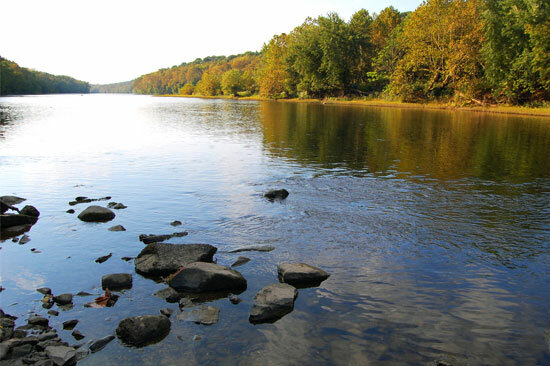Wastewater overhaul will cut pollution in West Virginia
A new treatment plant will improve water quality in the Potomac River.
After eleven years, $40 million and more than 16,000 linear feet of pipe, West Virginia is set to bring a new wastewater treatment plant online and make huge cuts to the pollution it sends into the Chesapeake Bay.
Under construction in West Virginia’s Eastern Panhandle, the Moorefield Wastewater Treatment Plant will replace four existing plants with one new system, marking a significant milestone in the headwater state’s efforts to curb pollution and improve water quality. Expected to go into operation this fall, the plant will remove 90,000 pounds of nitrogen and 93,000 pounds of phosphorous from West Virginia wastewater each year.
Funded by a range of sources—including the West Virginia Economic Development Authority, the West Virginia Department of Environmental Protection and the U.S. Environmental Protection Agency (EPA)—the new plant is heralded as evidence that thoughtful planning and forward-thinking—especially where pollution regulations are concerned—can help a community move toward conservation and environmental change.
In the 1990s, the hundreds of wastewater treatment plants that are located across the watershed could be blamed for more than a quarter of the nutrient pollution entering the Bay, as the plants pumped water laden with nitrogen and phosphorous into local rivers and streams. Such an excess of nutrients can fuel the growth of algae blooms that block sunlight from reaching underwater grasses and, during decomposition, rob the water of the oxygen that aquatic species need to survive.
But in the last decade, technological upgrades to wastewater treatment plants have surged, and the pollution cuts that result mean these plants now contribute less than 20 percent of the nutrients still entering the Bay.
According to Rich Batiuk, Associate Director for Science with the EPA, the uptick in upgrades can be attributed to a number of factors.
“Wastewater treatment plants have always been regulated,” Batiuk said. “But [until the last decade], there wasn’t the science or the political will or the … water quality standards that could drive the higher levels of wastewater treatment that result in lower levels of nitrogen and phosphorous flowing into the watershed.”
As the science behind wastewater engineering has improved and the incentives for implementing upgrades have grown, more plants have begun to make changes. Some implement a “zero discharge” plan, using nutrient-rich effluent to feed agricultural crops rather than excess algae. Others—like the Moorefield plant—expose wastewater to nutrient-hungry microbes that feed on nitrogen and phosphorous; the resulting sludge, modified without the addition of chemicals, can be turned into compost rather than fodder for the local landfill.
Such modern upgrades to otherwise aging infrastructure have been celebrated as a boon for local communities and the wider watershed. While the Moorefield plant will, in the end, curb pollution into the Bay, it will first curb pollution in the South Branch of the Potomac River, into which it sends its effluent.

"The South Branch of the Potomac is a unique place,” Batiuk said. “People fish there, they swim there. This new plant helps more than the Chesapeake Bay.”
And Moorefield residents—including the Town of Moorefield Public Works Director Lucas Gagnon—plan to witness this local change firsthand.
“The residents in this area are aware of the Chesapeake Bay and its needed [nutrient] reductions,” Gagnon said. “But the biggest benefit for the local folks will be the reduction of nutrients in local waterways.”
“There are many people that fish and boat the South Branch,” Gagnon continued. “When this plant goes online, the water quality will be greatly enhanced, and they will have a much cleaner, better river to enjoy.”

Comments
There are no comments.
Thank you!
Your comment has been received. Before it can be published, the comment will be reviewed by our team to ensure it adheres with our rules of engagement.
Back to recent stories